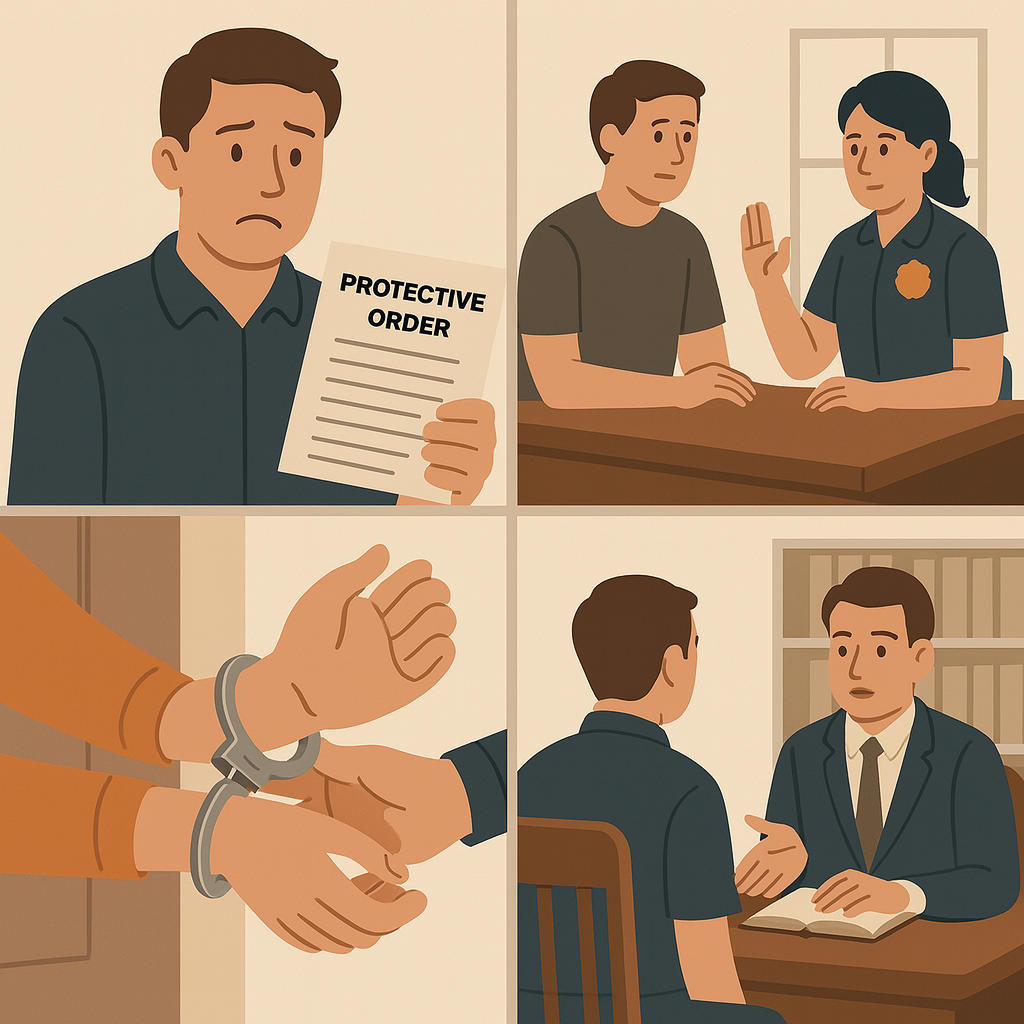What Happens After I’m Served with a Protective Order in Utah?
Plain-English next steps, timelines, hearing outcomes, evidence tips, and compliance essentials
If you have been served with a protective order in Utah, what you do in the next few days matters a lot. Protective orders are court orders with serious legal weight. This guide gives you Utah-focused answers first, then the exact steps, timelines, and common mistakes so you can move forward with confidence.
At Utah Law Explained, our mission is to turn complex law into plain-English. Let’s break down what happens next and how to protect yourself by following the rules.
Read the Order Carefully
Do not skim. Read every line so you understand the limits and avoid accidental violations.
No Contact Rules
See who you must avoid contact with, including rules about calls, texts, social media, and third-party contact.
Restricted Places
Check locations you cannot enter, like a home, workplace, school, or daycare. Plan routes to avoid run-ins.
Temporary Custody
Some orders include temporary custody or parent-time limits. Note any exchange rules and safe locations.
Firearm Restrictions
Orders can restrict possession or purchase of firearms. Violations carry criminal penalties.
Deadlines
Most cases move from a temporary order to a full hearing within about 20 days. Mark your calendar now.
Obey Immediately
Even if you believe the order is unfair, comply right away. Violating a protective order in Utah is a crime and can lead to arrest, jail time, and stronger restrictions.
If both of you reach out to each other, only one of you has an active order to obey: you. Do not reply. Save proof and bring it to court.
Prepare for the Hearing
Gather Evidence
Your Legal Options
Possible Outcomes
Compliance After Court
Step-by-Step: Your Next 20 Days
Read and Map Restrictions
List people and places to avoid. Plan routes and schedules that prevent contact.
Organize Evidence
Save messages, logs, and receipts. Create a simple timeline of events with dates and times.
Line Up Witnesses
Ask potential witnesses if they are willing to testify. Gather their statements or notes.
Consider Counsel or Continuance
Hire an attorney if you can. If you need more time to prepare, request a continuance before the hearing date.
Attend Hearing and Comply
Present your case respectfully. Follow the judge’s order exactly. Ask questions if anything is unclear.
Need Help Applying This to Your Situation?
Courts move fast in protective order cases. A short consult can help you avoid mistakes and present your best case at the hearing.
Talk to a Utah AttorneyVideo & Social Learning Hub
Key Takeaways
Obey first, prepare next. Violations are criminal and can make outcomes worse.
Organize evidence and witnesses early. Most hearings occur within about 20 days.
Hearing results can include dismissal, extension, or a long-term order. Ask the judge to clarify any part you do not understand.
This page is legal information, not legal advice. Talk to a Utah attorney for guidance on your case.
Next Step
Mark your hearing date, map out no-contact rules, and start a simple timeline with your supporting evidence.
Book a Protective Order ConsultGet help understanding hearing procedure, what evidence matters most, and how to stay compliant.
